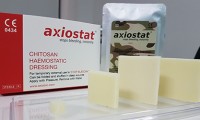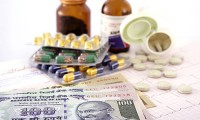-
Halt in E-Cigarette Sales by Indian Health Ministry
- Source: Reuters
- 1,311
- August 30, 2018
-
Essential forms for occupying the Indian pharmaceutical market
- Source: Ddu
- 2,041
- August 7, 2018
-
Axiostat Becomes the First US FDA-Approved Wound Dressing Product from India
- Source: BusinessToday
- 1,064
- August 3, 2018
-
China Welcomes Indian Drugmakers, as Trade with U.S. Sees Tension
- Source: FiercePharma
- 1,345
- July 17, 2018
-
Indian Government to Ban Oxycontin Imports
- Source: SputnikNews
- 862
- June 29, 2018
-
AstraZeneca’s Durvalumab Receives Go-Ahead from DCGI to Market in India
- Source: United News of India
- 2,818
- June 26, 2018
-
India’s First Future Health Index Launched by Philips
- Source: Economic times
- 842
- June 25, 2018
-
WHO Praises India for Progress in Reducing Maternal Mortality
- Source: Latestly
- 1,165
- June 12, 2018
-
Niti Aayog Planning to Improve Indian Medical Devices Sector
- Source: Ddu
- 1,065
- May 31, 2018
-
Delhi Minister States Essential Medicines Will Be Sold At MRP
- Source: Ddu
- 1,138
- May 29, 2018
your submission has already been received.
OK
Subscribe
Please enter a valid Email address!
Submit
The most relevant industry news & insight will be sent to you every two weeks.













